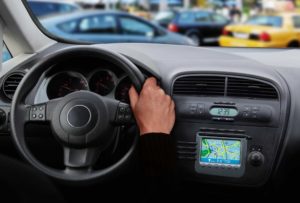There are new estimates that 2017 will be the most traveled Independence Day weekend on record. Some estimates also show that over 44 million Americans will travel 50 miles or more, with over 37 million traveling by car.
Ahh…Fourth of July road trips! Remember the days of printed maps and parents fighting over whether or not to stop and ask for directions?
Fortunately today’s cars are equipped with maps and navigation systems to alleviate family stress and help travelers arrive safely at their destinations.
Maps and navigation were top of mind at the recent Autotech Council meeting where OEMs, Tier 1s and automotive startups met to discuss the state of the automotive market. Hosted by Western Digital, the event’s focus was on “Mapping & Navigation” with lively discussion around a few common themes:
- When are we going to see fully autonomous, self-driving cars?
- Which is more important, mapping or navigation? (Spoiler: both!)
- Where should we store and process data for self-driving cars, at the edge or on the cloud?
Here’s some road trip reading material from what we heard at the meeting.
From Informing Consumers to Informing Cars
Erik Gundersen, CEO at MapBox, gave a state of the market update on the road to autonomy. The general consensus is that fully autonomous cars will be here by 2025. Semi-autonomous cars will be more common in 2020. Attendees agreed the most “turbulence” will occur during the transition time where both self-driving and human-driven cars share the road.
In a Fireside Chat, executives from The Kerton Group, TomTom Maps, and TeleNav discussed that as map data helps cars get there safely and on-time, we are transitioning from informing consumers to informing cars. As we near the intersection of autonomous driving capabilities and fully autonomous vehicles, cars equipped with artificial intelligence (AI) and machine learning (ML) onboard will enable smarter decisions.
The Great Debate: Maps vs. Sensors
What else is happening during this transition time? To make cars autonomous, increasingly accurate maps and sensors are in development to help self-driving cars know where they’re going.
Let’s start with sensors. Sensors are the “eyes and ears” of a car. LIDAR alone collects 2 million data points per second. Sensors alert drivers and vehicles of obstacles such as a pothole, accident, or lane closure ahead. Sensors provide valuable information about your surroundings at a given point in time, but they do not tell where you are going.
HD Maps replace age-old static maps with multiple layers of data including weather conditions, traffic reports, and building schematics. Combining these layers gives a more accurate picture of what lies ahead. The quality and reliability of map data makes or breaks its success. Japan is preparing for the 2020 Tokyo Olympics with a goal to make Tokyo a self-driving city with cars reaching at least L3 (partial) autonomy by then. Japan has been busily building HD maps, called “dynamic maps” locally, in preparation for this feat. The HD maps embedded in these vehicles need to be accurate so passengers arrive at the right destination!
Maps have the added value of providing context so that you can see what’s ahead of you and how to best navigate to your destination. Crowdsourcing map data with OpenStreetMap (OSM) provides valuable localized knowledge to populate HD maps. Layers of local knowledge from parks to bridges to water fountains are collected and integrated to produce highly accurate maps.
Maps also provide historical data versus sensors’ real-time data, but attendees agree both are critical. The next question is: where do we store all of this map and sensor data – in the car or in the cloud?
Storing Data at the Edge or in the Cloud?
Considerations for storing data onboard at the edge versus on the cloud include costs, customer experience and safety. How much should be stored at the edge is a question especially important in the automotive industry where both humans and cars must be able to make real-time decisions to remain safe. As we move toward increased V2V communication, data processing must happen locally so that vehicles can react to danger ahead. There’s no time to send data to the cloud and await a response.
As Colm Lysaght, VP of Corporate Strategy at Western Digital put it: “There’s a need for local storage, so that you get the right data at the right time, ahead of time!” Local storage also serves as a safety net, protecting against any interruption in Internet service. Aggregating data whether it’s preprocessing at the edge, or analyzing historical or shared data in the cloud enables smarter decisions.
Consensus: LOTS of Data is Needed to Drive Cars of the Future
There’s no question lots of storage is required to drive autonomous vehicles. Not just in mapping and navigation, but across infotainment, telematics, accident/drive recorders, digital clusters, V2V/V2I, ADAS and more! It is expected that a single autonomous car will have up to 1 TB of storage per car per day by 2022*. Whether it’s stored in the car or on the edge, pre-processed or sent to the cloud for historical analysis, data is what enables the safety and reliability of automotive transit.
Western Digital, an industry leader in storage technologies, is proud to support the Autotech Council and its innovative member companies. Western Digital recently launched its iNAND 7250A embedded storage device with the safety, quality, reliability and endurance requirements that are most important to the automotive industry.
We wish you a happy and safe Fourth of July weekend, wherever the road takes you!
*Based on internal estimates




